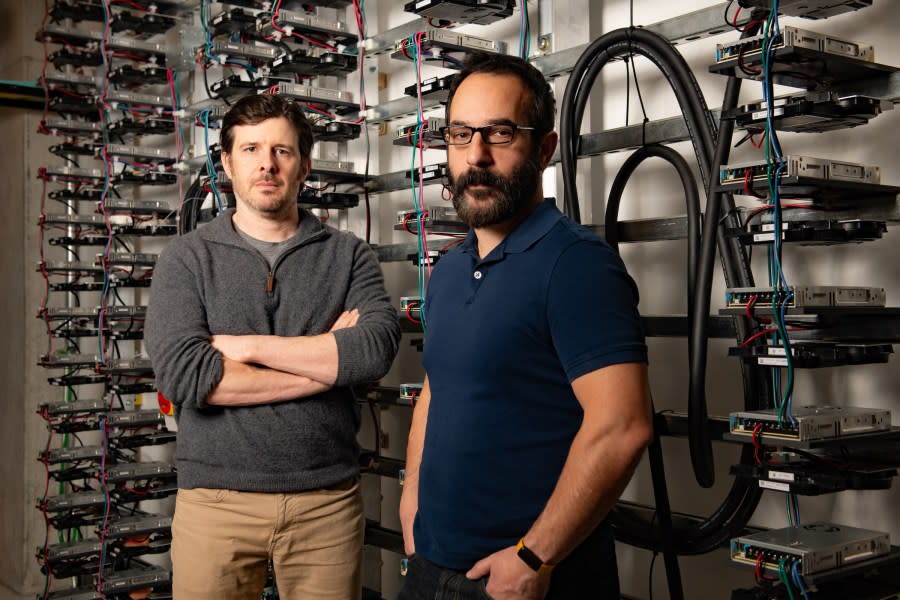UT building powerful AI computing cluster, aims to answer medical questions

AUSTIN (KXAN) — One of the most powerful artificial intelligence computer clusters in the academic world will be housed in Austin at the University of Texas.
The cluster will be made up of 600 high-powered graphics processing units, able to rapidly complete complex mathematical computations.
The cluster will focus on biosciences, health care, computer vision, and natural language processing. Some of the first applications will test its ability to read MRIs and work on creating new vaccines.
The cluster will be part of UT’s new Center for Generative AI and is expected to be up and running in Spring.
UT’s Machine Learning Laboratory Director Adam Klivans talked with KXAN’s Tom Miller about what he hopes the cluster can accomplish.
Tom Miller: For those of us who are still trying to wrap our minds around the technology behind artificial intelligence, what is this cluster? And how does it work?
Adam Klivans: In order to train these large models in deep learning, that are making all of these predictions and that power tools that you use, like Chat GPT, there are millions, billions, sometimes even trillions of parameters and numbers that have to be calculated and trained. You need special-purpose hardware in order to be able to build such large models. These special-purpose hardware modules are called GPUs. And you need a computer cluster with many GPUs to be able to scale up to these very, very large models that can power this type of automated decision-making.
Tom: Can you give me a real world example of what you hope to accomplish with this?
Klivans: One of the applications that we have in mind is using AI tools to improve health care. So we have many researchers who work on improving MRI scanning. You can imagine that if you have, for example, an infant in an MRI scanner that’s moving around a lot, it’s hard to get a very clear picture or scan of what that MRI looks like. And we’re using AI tools to take very noisy or incomplete scans and de-noise them to give sharper, better images for the clinician.
Tom: We’ve heard of major companies like Open AI and their product Chat GPT, but why is it important to take something that we’re seeing a lot in the private sector and have it in academia as well?
Klivans: People are more and more concerned about sensitive material that might be hiding inside these extremely large models. People have shown that you can actually type strange keywords into these models and get back sensitive personal information. You might see images that have been copyrighted or that are inappropriate. It’s difficult to verify exactly what’s going on inside these models, and use them and deploy them in a safe way. So if these models are developed in a university setting, where the data sets and the models are made open, and the process is transparent, then you can guarantee a lot more safety and interpretability of the models that you eventually deploy.
Tom: How does this fit into what UT is already doing with working with artificial intelligence?
Klivans: UT has one of the strongest foundations in artificial intelligence in the world, we have an incredible group of researchers. But there are many projects that we would like to embark upon, that we just simply didn’t have the compute power to take advantage of. For example, if we want to make more tools for healthcare, if we want to simulate new large models to find new therapeutics and vaccines, we needed that extra computing power to be able to build the models and scale the models that we have in mind.
For the latest news, weather, sports, and streaming video, head to KXAN Austin.

